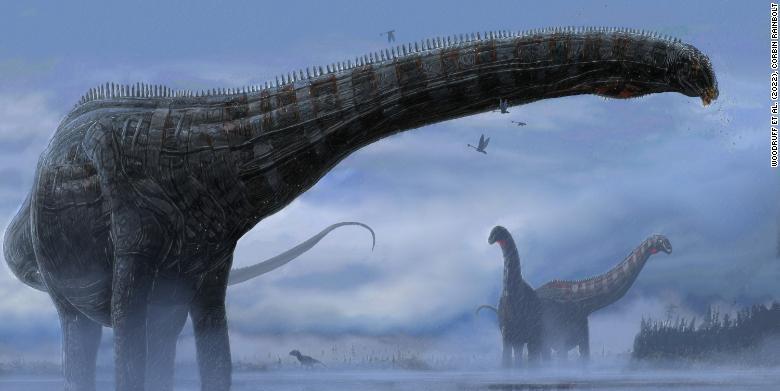About 150 million years ago, when a young long-necked dinosaur was wandering around what is now southwestErn Montana, it probably had a cough and a fever. According to a new study, the fossil of this dinosaur is known as Dolly Parton's "Dolly," and it could be the first evidence of a dinosaur respiratory infection.
Dolly was a long-necked herbivorous dinosaur about 18 meters long and aged between 15 and 20 at the time of her death. Dolly's remains, including an intact skull and cervical spine, were first identified at a site in Montana in 1990, but it was not possible to determine Dolly's sex based on the fossils. Recently, researchers decided to take a closer look at Dolly's three neck bones and found abnormal bone protrusions of irregular shape and texture.
The researchers used CT imaging to determine that abnormal bone growth may have formed due to an infection in Dolly's balloon. Dinosaurs had a complex respiratory system, with airbags connected to its lungs. The researchers believe that Dolly developed a respiratory infection inside her air sac, which then spread to her neck bone.

During trauma, bones grow quickly, and given the symptoms that this animal can have, we all experienced the same symptoms, cough, difficulty breathing, fever, etc., and this is a dinosaur 150 million years ago, which may have been as painful as when we were sick.
These bone hyperplasias are only about a centimeter tall, so they are unlikely to protrude or cause Dolly's neck to swell. Instead, due to her flu or pneumonia-like symptoms, including weight loss and sneezing, Dolly's illness may have been caused by a fungal infection, similar to aspergillosis. This is a common respiratory disease in modern birds and reptiles and can lead to bone infections. If aspergillosis is not treated, it can be fatal in birds, so Dolly may die after getting sick.
But how did Dolly get sick in the first place? Given that soft tissues don't turn into fossils, trying to piece together the puzzle of dinosaur disease with only bones can be difficult. The environment in Montana 150 million years ago could have caused Dolly to fall ill.
The Rocky Mountains are in infancy and have a very similar environment to the U.S. Gulf Coast region — relatively flat, with large rivers flowing into the seaway, warm, humid, and well-vegetated, one possibility is that Dolly's infection is caused by fungal infections. The warm, humid climate is the perfect habitat for fungi today, as were millions of years ago.
If Dolly had an infection similar to aspergillosis, the dinosaurs might have infected it in a number of ways, such as accidentally inhaling fungal spores or getting infected from other fauna. In modern birds, crowded environments can lead to the spread of infection. Dinosaurs like Dolly are known to stick tightly together during nesting season, which can cause infections to spread like wildfire.
While the real cause may never be known, this study provides more insight into the dinosaurs' immune systems. The fossilized infection in Dolly not only helped trace the evolutionary history of respiratory-related diseases, but also gave researchers a better understanding of which diseases dinosaurs were susceptible to.
Previous studies have shown that dinosaurs, like humans, suffered from gout, cancer and diseases contracted as a result of injuries. There is also evidence of TUBERCULO-like infections in marine reptiles that lived 245 million years ago. It is also the first time dinosaur fossils have revealed evidence of respiratory infections.
The discovery helps researchers better understand the way dinosaurs breathed, the evolutionary relationships between birds and dinosaurs, and the pathways of dinosaur infection and disease that are not much different from what we experience today.
Next, the researchers wanted to determine whether other dinosaur fossils found in the same location as Dolly had this infection, and explore other diseases that dinosaurs might have suffered from that could be found in modern birds. As scientists from different disciplines work together to understand the life of dinosaurs, paleopathology or the study of pathological conditions found in the remains of ancient humans and animals is evolving.
According to the forecast, the methods, techniques and composition of the research team will change in the future. When researchers analyze fossils, including experts from different disciplines, such as medical experts, new insights can be provided.